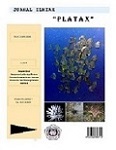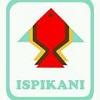Rekruitment Tropical Box Mussels, Septifer Bilocularis In Tiwoho Coastal Area
DOI:
https://doi.org/10.35800/jip.v9i2.35726Keywords:
box mussel, Septifer, recruit, aggregation, larva, TiwohoAbstract
The purpose of this study was to determine 1) the types of substrates on which Septiver attached, and 2) the number of tropical boxes mussel recruits at different size aggregation. The meter was placed on one side of the mussel aggregation, and it was pulled up to the other side through the middle of the mussel aggregation. There were two different sizes of aggregation, namely small aggregation with a diameter of 5-25 cm, and large aggregation with a diameter > 1 meter. Aggregation samples were carried out by placing a core with a diameter of 10 cm in the center of the small mussel aggregation, then at the edge and the middle position of the large aggregation. All aggregation in the core was removed and inserted into the labeled sample plastic. The sampling was applied 4 times on different mussel aggregations, as replication. The results show that young mussels (recruiters) are attached to algae stems, mussel byssus, and dead hard coral. The number of mussel recruits was square-root transformed to obtain homogeneity data, before being tested using One-Way Analysis of Variance. The results showed that the recruitment of Septifer was influenced by the size of the aggregation (P<0.05, 1-way ANOVA). The average recruitment of Septiver in the middle position has a higher number of recruits than to the edge position (SNK test, P < 0.05), as well as the average recruitment in the middle position was higher than to the small aggregations (SNK-Test, P < 0.05). However, no recruits differ among edge position of large aggregation and small aggregation occurs (SNK test, P > 0.05). Discussion of different factors affecting attachment occurs.
Keywords: box mussel; Septifer; recruit; aggregation; larva; Tiwoho
Abstrak
Tujuan penelitian ini adalah untuk mengetahui 1) jenis-jenis substrat yang menjadi tempat menempel kerang mudah Septiver, dan 2) jumlah rekruit kerang kotak tropis pada ukuran aggregasi kerang yang berbeda. Pengukuran ukuran aggregasi kerang dilakukan dengan meletakkan meteran pada salah satu sisi aggregasi kerang, selanjutnya meteran ditarik sampai ke sisi yang lain melewati bagian tengah aggregasi kerang. Ada 2 jenis ukuran aggregasi, yaitu aggregasi kecil dengan ukuran diameter aggregasi 5 – 25 cm, dan aggregasi besar, yaitu dengan ukuran diameter aggregasi kerang > 1 meter.  Pengukuran diameter aggregasi dilakukan 4 kali, masing-masing dengan aggregasi berbeda, sebagai ulangan. Sampel aggregasi kerang dilakukan dengan meletakkan kor (‘cor’) dengan diameter 10 cm di bagian tengah pada aggregasi kerang kecil, posisi pinggir dan tengah aggregasi besar. Sampel diambil juga sebanyak 4 kali (ulangan) pada masing aggregasi yang berbeda, sebagai ulangan. Kerang disortir dengan bantuan mikroskop, di mana kerang dengan ukuran < 3 mm adalah yang disebut sebagai rekruitmen, dipisahkan dari substrat yang menjadi tempat menempel, selanjutnya kerang diukur panjangnya dengan menggunakan mistar, dengan ketelitian 1 mm. Hasil penelitian teridentifikasi bahwa kerang muda menempel pada substrat alga, rambut (byssus), dan substrat keras karang mati. Data jumlah rerkuit telah ditransform dengan menggunakan akar, sebelum diuji dengan Analisa Varians 1 Arah (One-Way ANOVA). Hasil menunjukkan bahwa rekruit kerang Septifer adalah dipengaruhi oleh ukuran aggregasi (P<0.05, 1 Arah ANOVA). Rata-rata rekruit kerang yang berada di posisi tengah memiliki jumlah rekruit yang lebih besar dibandingkan dengan rata-rata rekruit yang menempel pada posisi pinggir (Uji SNK, P < 0.05). Sama halnya dengan rata rekruit yang ada di posisi tengah aggregasi besar adalah lebih besar dibandingkan dengan jumlah rekruit dari aggregasi kecil (Uji-SNK, P < 0.05). Hal yang berbeda, di mana tidak ada perbedaan rata-rata rekruit yang ada di posisi pinggir aggregasi besar dibandingkan dengan yang ada di aggregasi kecil (uji SNK, P>0.05). Faktor yang mempengaruhi penempelan dan rekruit dari agrregasi dengan ukuran berbeda didiskusikan.
Kata kunci: Kerang Kotak; Septifer; recruit; aggregate; larva; Tiwoho
References
Bayne, B. L. (1965). Growth and the delay of metamorphosis of the larvae of Mytilus edulis (L.). Ophelia 2(1): 1-47.
Christensen, H. T., Dolmer, P.,Hansen, B.W., Holmer, M.,Kristensen,L.D., Poulsen, L.K., Stenberg, C., Albertsen, C.M., & Støttrup, J.G. (2015). Aggregation and attachment responses of blue mussels, Mytilus edulis—impact of substrate composition, time scale and source of mussel seed. Aquaculture 435: 245–251.
Dolmer, P., & Svane, I. (1994). Attachment and orientation of Mytilusedulis L. in flowing water. Ophelia 40, 63–73.
Ompi, M., & Svane, I. (2018). Comparing spawning, larval development, andrecruitments of four mussel species (Bivalvia: Mytilidae) from South Australia. AACL Bioflux 11(3):576-588.
Svane, I & Ompi, M. ( 2012). Patch dynamics in beds of the blue mussel Mytilus edulis L.: effects of site, patch size, and position within a patch. Taylor & Francis online:187–202. Doi.org/10.1080/00785326.1993.10429917
Ompi, M. (2010). Ssttlemen behavior and size of mussel larvae from the familyMytilidae (Brachidontes erosus (Lamarck, 1819), Brachidontes rostratus (Dunker, 1857), Trichomya hirsutus (Lamarck, 1819), and Mytilusgalloprovincialis Lamarck, 1819. Journal of Coastal Development. Volume 13 (3): 215-227.
Ompi, M. (1998). Recruitment of the box mussel, Septiferbilocularis L.: effects of substratum and adult density. Phuket Marine Biological Bulletin Vol 8: 18-25.
Ompi, M., & Lumingas, L.J.L.(1997). The effect of patch sizes on morphology and growth on the intertidal box mussel Septiver billocularis L., in North Sulawesi, Indonesia. Phuket Marine Biological Centre Vol 17 (1): p37 – 40.
Peterson, C., Grabowski, J., Powers, S. (2003). Estimated enhancement of fish production resulting from restoring oyster reef habitat: quantitative valuation. Marine Ecology Progress Series 264: 249–264.
Wulff, F., Humborg, C., Andersen, H.E., Blicher-Mathiesen, G., Czajkowski, M., Elofsson, K., Fonnesbech-Wulff, A., Hasler, B., Hong, B., Jansons, V., Mörth, C.M., Smart, J.C.R., Smedberg, E., Stålnacke, P., Swaney, D.P., Thodsen, H., Was, A., Zylicz, T. (2014). Reduction of Baltic Sea nutrient inputs and allocation of abatement costs within the Baltic Sea catchment. Ambio 43: 11–25.
Downloads
Published
How to Cite
Issue
Section
License
COPYRIGHT
Authors who publish with this journal agree to the following terms:
Authors hold their copyright and grant this journal the privilege of first publication, with the work simultaneously licensed under a Creative Commons Attribution License that permits others to impart the work with an acknowledgment of the work's origin and initial publication by this journal.
Authors can enter into separate or additional contractual arrangements for the non-exclusive distribution of the journal's published version of the work (for example, post it to an institutional repository or publish it in a book), with an acknowledgment of its underlying publication in this journal.
Authors are permitted and encouraged to post their work online (for example, in institutional repositories or on their website) as it can lead to productive exchanges, as well as earlier and greater citation of the published work (See The Effect of Open Access).


















